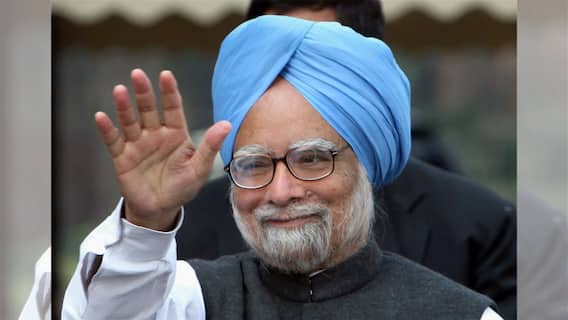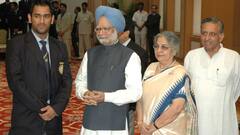Explorer
Advertisement
On Vajpayee's 95th Anniversary, PM Launches Atal Bhujal Yojana; Rohtang Tunnel Renamed As Atal Tunnel
The strategic tunnel under Rohtang Pass has been named after former prime minister Atal Bihari Vajpayee on his birth anniversary.

Image: ANI
New Delhi: Prime Minister Narendra Modi on Tuesday, flagged off the Atal BhuJal Yojana, at an event in New Delhi’s Vigyan Bhavan, to mark the 95th birth anniversary of the BJP stalwart and former Prime Minister Atal Bihari Vajpayee. The Prime Minister also announced that the strategic tunnel under Rohtang Pass in Himachal Pradesh, will now be known as Atal Tunnel.
“Today an important project that is very important for the country has been dedicated to Atal ji. Rohtang Tunnel connecting Himachal Pradesh to Ladakh and Jammu Kashmir, and connecting Manali with Leh, will now be known as Atal Tunnel,” PM said.
The Atal Bhujal project, a Rs 6,000 crore scheme , was approved by the Union Cabinet on Tuesday.
It will be implemented in the next five years, with an aim to improve groundwater management through community participation in seven states.
Briefing reporters after the cabinet meeting, Union Minister Prakash Javadekar said the scheme is expected to benefit nearly 8,350 gram panchayats in 78 districts in Gujarat, Haryana, Karnataka, Madhya Pradesh, Maharashtra, Rajasthan and Uttar Pradesh.
The scheme, also known as 'Atal Jal', will promote panchayat-led ground water management and behavioural change with primary focus on demand-side management.
Also Read | Modi, Shah Pay Tribute To Atal Bihari Vajpayee On 95th Birth Anniversary: PM To Unveil Statue In Lucknow
A statement said of the total outlay of Rs 6,000 crore, 50 per cent shall be in the form of World Bank loan and will be repaid by the Central Government.
The remaining 50 per cent shall be through Central assistance from regular budgetary support. The entire World Bank's loan component and Central assistance shall be passed on to the states as grants, it said.
The scheme is aimed at contributing towards the goal of doubling farmers' incomes, promoting participatory ground water management, improving water use efficiency on a mass scale, improving cropping pattern and promoting efficient and equitable use of ground water resources and behavioural change at the community level, the statement added.
The scheme has two major components - one is institutional strengthening and capacity building for sustainable ground water management in the states including improving monitoring networks, capacity building, strengthening of water user associations. The second component is incentivising the states for achievements in improved groundwater management practices namely data dissemination, preparation of water security plans, implementation of management interventions through convergence of ongoing schemes, adopting demand side management practices, etc.
(additional inputs from PTI)
Follow Breaking News on ABP Live for more latest stories and trending topics. Watch breaking news and top headlines online on ABP News LIVE TV
View More
Advertisement
Trending News
Advertisement
Advertisement
Top Headlines
India
Cities
Technology
India
Advertisement


Saswat PanigrahiSaswat Panigrahi is a multimedia journalist
Opinion



































